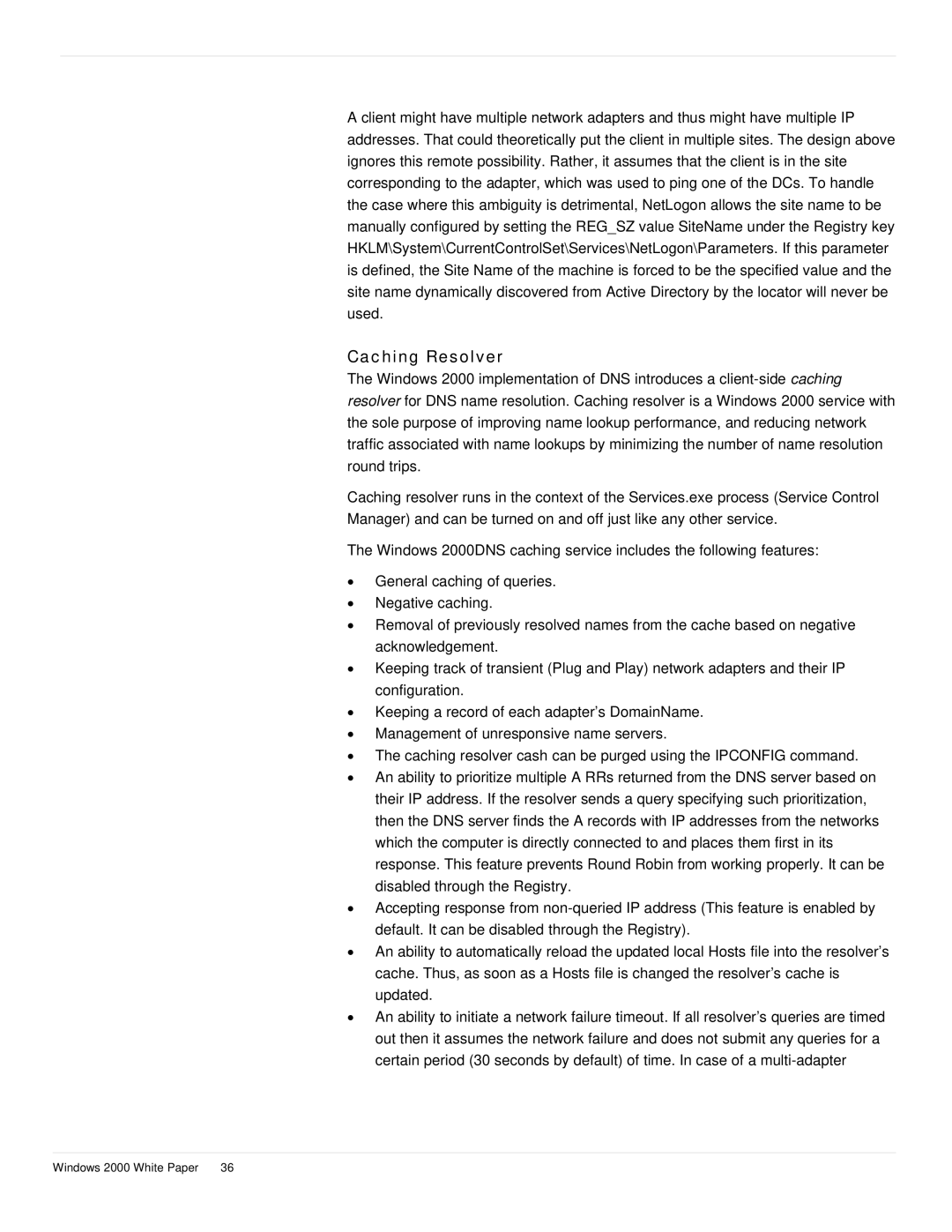
A client might have multiple network adapters and thus might have multiple IP addresses. That could theoretically put the client in multiple sites. The design above ignores this remote possibility. Rather, it assumes that the client is in the site corresponding to the adapter, which was used to ping one of the DCs. To handle the case where this ambiguity is detrimental, NetLogon allows the site name to be manually configured by setting the REG_SZ value SiteName under the Registry key HKLM\System\CurrentControlSet\Services\NetLogon\Parameters. If this parameter is defined, the Site Name of the machine is forced to be the specified value and the site name dynamically discovered from Active Directory by the locator will never be used.
Caching Resolver
The Windows 2000 implementation of DNS introduces a
Caching resolver runs in the context of the Services.exe process (Service Control Manager) and can be turned on and off just like any other service.
The Windows 2000DNS caching service includes the following features:
•General caching of queries.
•Negative caching.
•Removal of previously resolved names from the cache based on negative acknowledgement.
•Keeping track of transient (Plug and Play) network adapters and their IP configuration.
•Keeping a record of each adapter’s DomainName.
•Management of unresponsive name servers.
•The caching resolver cash can be purged using the IPCONFIG command.
•An ability to prioritize multiple A RRs returned from the DNS server based on their IP address. If the resolver sends a query specifying such prioritization, then the DNS server finds the A records with IP addresses from the networks which the computer is directly connected to and places them first in its response. This feature prevents Round Robin from working properly. It can be disabled through the Registry.
•Accepting response from
•An ability to automatically reload the updated local Hosts file into the resolver’s cache. Thus, as soon as a Hosts file is changed the resolver’s cache is updated.
•An ability to initiate a network failure timeout. If all resolver’s queries are timed out then it assumes the network failure and does not submit any queries for a certain period (30 seconds by default) of time. In case of a
Windows 2000 White Paper | 36 |
